By Hovey Smith
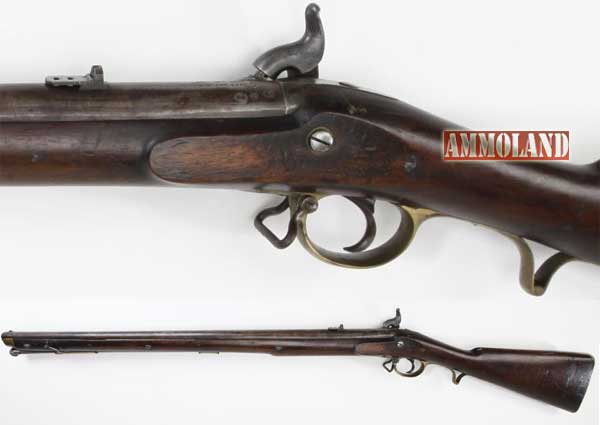
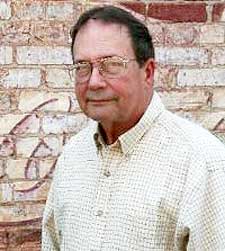
Central Georgia –-(Ammoland.com)- My primary interest in black-powder guns is hunting with them. While I appreciate the usefulness of historic reconstructions and fine art as done on Golden Age Pennsylvania rifles, I am much more interested in taking original and replica guns back to the woods and using them to take deer, hogs and other game.
With the release of stocks of old military pattern guns from the Royal Arsenal of Nepal that are now available from Atlanta Cutlery, the supply of historic British Empire Guns from the 1750s-1940s was enormously increased.
Over the past decade I had purchased, used and cleaned a number of them. They went on waterfowling and deer hunting adventures with me, including using an original Brunswick rifle to take a deer at Hard Labor Creek State Park in Georgia.
My video, “Brunswick Rifle at Hard Labor,” may be seen on YouTube at: https://youtu.be/0d63j4XCVYY.
At the start of the project I have a completed rifle to use as a guide, along with original and replacement parts.
The Nepalese did not throw anything away, and there were numbers of Brunswick rifles with broken stocks in the Nepalese arsenal. Atlanta Cutlery sold these as “parts guns.” To insure that I had spare parts for the rifle that I owned, I bought one of these $99 “parts gun” packages.
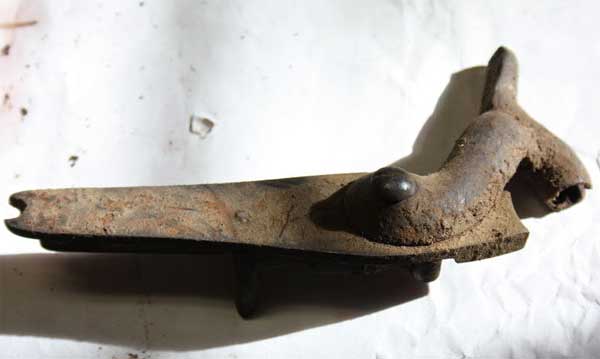
I cleaned these up and discovered that the barrel was apparently better rifled than the one on the gun that I owned, and I begin thinking about building a new gun around this parts. Although the old parts were very grimy, showed signs of hard use and had some mangled screw heads, they were mostly intact. I noted a crack on the brass trigger plate, but thought that I could repair the trigger plate with solder, which I did.
You can see what Atlanta Cutlery has available at their website www.atlantacutlery.com.
I was able to purchase the needed replacement stock and brass parts from The Rifle Shoppe in Jones, Oklahoma.
You can see their webpage at www.therifleshoppe.com and request a very complete catalogue of replacement parts for historic muzzleloading guns.
The patch box lid, head and hatch were the only parts that I could not immediately obtain.
In the meantime, Atlanta Cutlery began to offer brass patch boxes that they had made in India to sell with their completed guns. I received the patch box from them and found that it was a better fit on my Rifle Shoppe stock than on my original gun. I was not surprised as these hand-made guns are very individualistic. Among the 13 (and continuing) YouTube videos that I did or am doing on the gun, one was on inletting the Atlanta Cutlery patch box to my newly-stocked rifle.
I discovered that the Cutlery patchbox was a much better fit on my new stock than on the old gun. So, I fitted the patchbox to the new stock, and you can view this video on YouTube at: https://youtu.be/-dpk5uhtlf0.
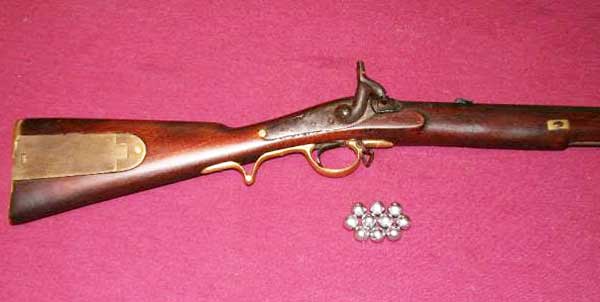
Once Finished
Starting off cautiously with a patched round ball load and increasing from 60-85 grains of FFg black powder, I found that my optimum hunting load was likely to be 80 grains of GOEX FFg, an 11-gauge 1/4-inch cardboard wad (available from Dixie Gun Works), 30 grains of Cream of Wheat filler, one thickness of Thompson/Center Arms Bore Butter, lubricated pillow tiking cloth, a thinner canvas patch of top of that and the belted ball cast from a custom mold made by Jeff Tanner in England who has a website at www.jt-bullet-moulds.co.uk.
The double patching was needed because the ball cast for the older rifle was slightly small for the new gun’s barrel. Although this set of components was not ideal, it did indicate that the new barrel would, in fact, shoot better than the old, although the original sights could not be adjusted to hit the point of aim at 50 yards. I had a tang-mounted peep sight and a fiber-optic front sight that seemed likely to work on my new gun. These new sights would allow me to sight in the rifle at reasonable ranges and determine if it seems worthwhile to order a new better-fitting mold.
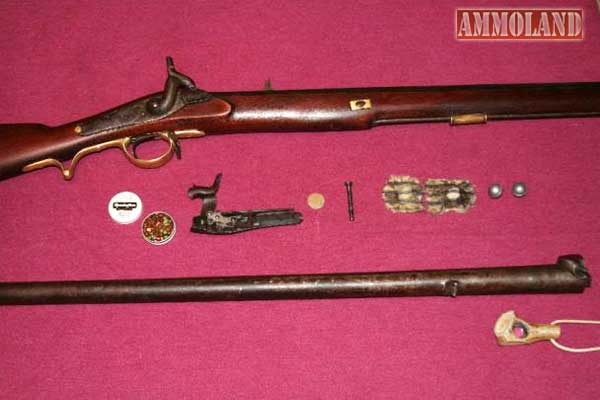
Old guns like this put together from 150-year-old salvaged parts may be dangerous or unsafe to shoot. Have any such gun inspected by a competent black-powder gunsmith before use and frequently inspect for any signs of failure.
The Brunswick rifle is particularly prone to get balls stuck down the barrel after a few shots. This was a historic problem with this gun and continues. Wipe the barrel between shots to help prevent this problem at the range. Should the problem persist, work the barrel with a 12-gauge brass bristle brush and re-clean. DO NOT ATTEMPT TO SHOOT OUT STUCK BALLS. These are hand-welded barrels that were forged from strips of steel pounded around a mandrel that can become unwound like a spring. If you own this gun buy a ball extractor, like the end of a wood screw, that fits on your heavy range rod and use it to pull these balls.
The use of modern sights on this gun does not disturb me as I am not attempting to make a historical replica, but to use these old parts to construct an effective hunting rifle that I can use on primitive weapon hunts where scope sights are not allowed. Should I need to use a gun without fiber-optic elements, I still have my old rifle. The patch box latching system provided with the lid was not satisfactory to me because it apparently required a wooden block to be put into the box cavity to attach the spring. As I also needed to have the sights attached and other parts drilled to set pins and screws, I shipped to gun to Gunsmith Terril Herbert, who is now located in Daytona Beach, Florida. Herbert specializes in muzzleloaders and British Empire guns, and may be contacted at https://[email protected].
I have had a lot of fun with this project and there is much more to talk about but I just wanted to give readers a quick look at the fun to be had with some antique muzzle loading guns that can be used for hunting today.
About William Hovey Smith:
As a Professional Geologist and an Outdoor Writer, Hovey has had the opportunity to live and hunt over most of North America. He was always interested in outdoor writing and sold his first articles in the 1970s and have continued with newspaper, magazine and book writing every since. Hovey has done beat reporting for regional newspapers, been published in more than 80 different publications and has produced 15 books including “X-Treme Muzzleloading: Fur, Fowl and Dangerous Game With Muzzleloading Rifles, Smoothbores and Pistols” and most recently both screen and stage plays. Visit: www.hoveysmith.com

Do you have steel patchbox ? You deliver to Quebec